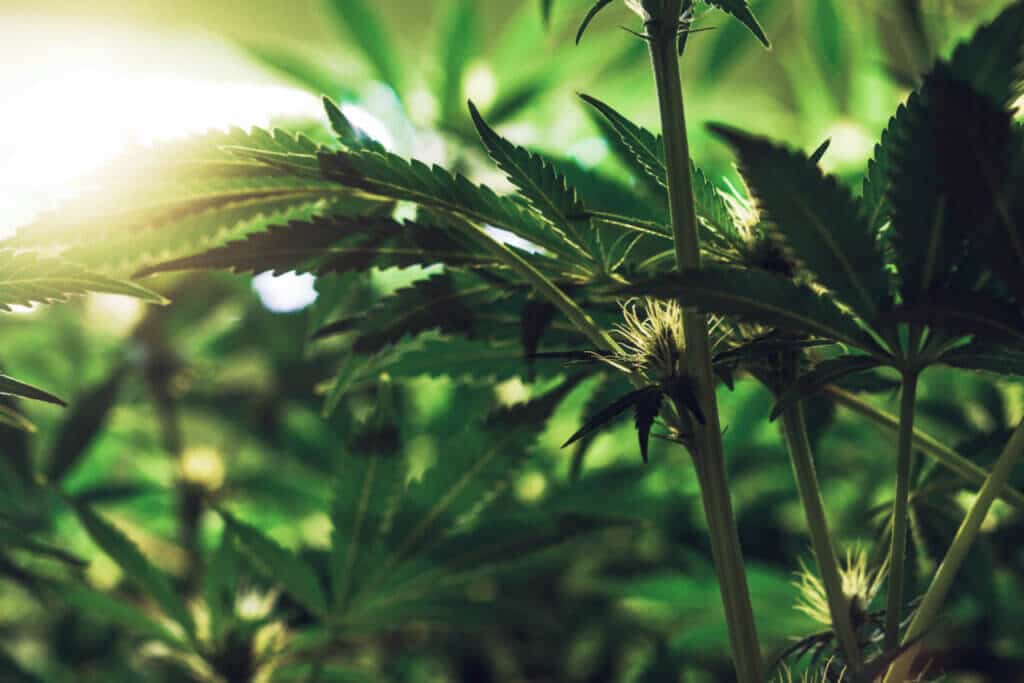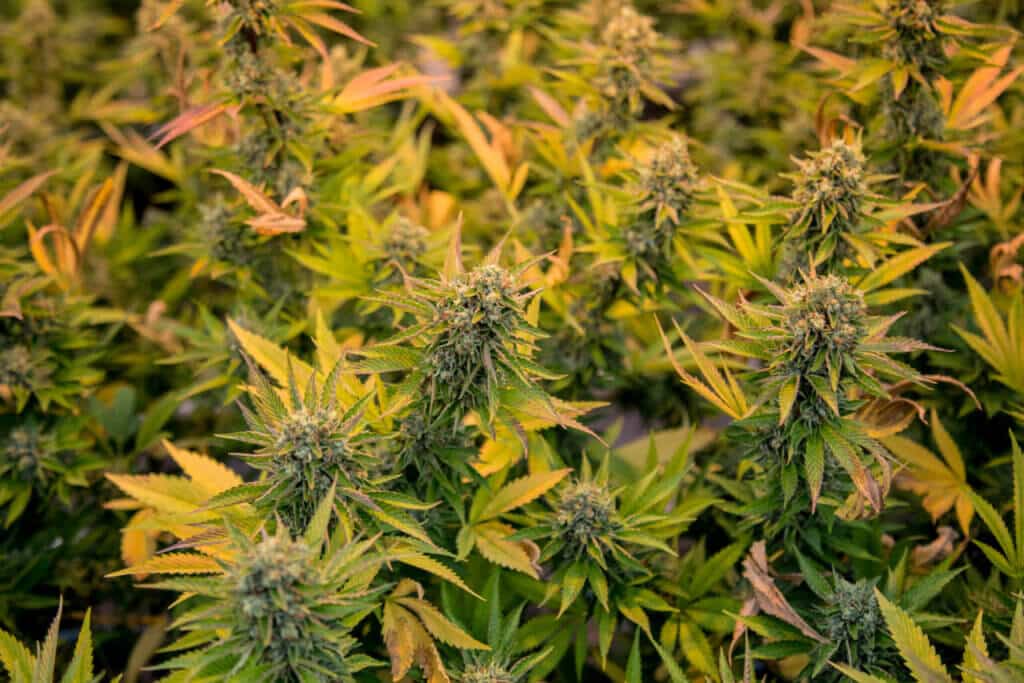Free Tropical Runtz seeds on orders over $150!
Cannabis plants undergo various growth phases before maturing and producing the potent buds everyone seeks. Knowing how to traverse these stages will allow you to cultivate your cannabis at home, saving you money while providing you with year-round access to your preferred strains. This blog will walk you through the phases of growing cannabis so that you’re properly prepared when your seeds arrive.
The average time for a cannabis plant to reach maturity is around 3-5 months. However, various circumstances will impact the growth of your cannabis plants. Many factors influence cannabis growing time, including strain biology, method of production, and environmental conditions. Furthermore, the entire process from seed to harvest can take 3-7 months.
The first phase in the cannabis growing cycle is germination. Exposing your seeds to appropriate environmental conditions causes them to emerge from dormancy, pop their husks, and focus on building a taproot. Start the germination procedure with the number of seeds that will fit in your grow area as fully developed plants. Ascertain that you are prepared to complete the whole weed-growing cycle. Don’t waste your time on bad cannabis seeds. If green or white and mushy, they’ve certainly gone bad and should be discarded. Conversely, healthy, viable weed seeds are usually brown, dry, and firm.
There are numerous common methods for germinating seeds, but the paper towel technique is the most tried, proven, and effective one most growers use. Follow the Premium Cultivars germination guide to get this stage of the weed development cycle started effectively. You must not allow your seeds to dry out at this stage of the weed-growing process. Moisture triggers the enzymes that distribute energy from the seed’s food storage for development.
The seedling growth period is delicate; plants require 18-24 hours of sunshine, wet soil, and mild humidity to grow quickly. Since the seedling has such a small root system, it is critical to avoid drowning it by overwatering. When a plant matures into a seedling, it will sprout more traditional-looking cannabis leaves. Cannabis plants are considered seedlings until they grow leaves with all their fingers. Healthy seedlings should be short with lush foliage and have brilliant green leaves. During this stage, growth surroundings must be kept clean and clear of excess moisture to prevent the plant from becoming infected or moldy.
The vegetative stage of the cannabis life cycle is the longest. It may last from 4 to 8 weeks, depending on the strain. Healthy cannabis may grow at a rate of around two inches every night. Look for escaping roots to determine when your seedlings are vegging. It’s time to transplant your cannabis if they’re running out of the bottom of their present pot. At this point, you may begin applying training methods, and topping your weed keeps it controlled. Your plant also needs nitrogen to create lush leaves.
Indoor growers must replace CFL or LED lights with metal halide (MH) lights while maintaining the same light-to-dark cycle schedule. Maintain temperatures between 70-80°F during the vegetative phase of weed plant stages. You should strive to set the temperature inside to mirror the day’s high point before dropping down for the night. Reduce humidity by 5% per week until the conditions reach 45-55% to prepare your weed plants for the next stage of the development cycle.

The flowering stage of cannabis growth, which usually lasts 6-10 weeks, is critical for you as a grower. Growth will stall at this time in the cannabis plant’s development to focus energy on increasing bud development. Plants may be transitioned into the blooming stage by limiting their light exposure. A 12-12 lighting cycle (12 hours of light and 12 hours of darkness) is ideal. When the plants blossom, they create a sticky resin on the leaves.
Trichomes will also grow. This indicates that the cannabinoids in the plant are maturing beautifully. The eventual potency of the cannabis will be determined by how long it spends in the blooming stage. At this phase, keep the temperature between 68 and 77 degrees Fahrenheit and the humidity about 50%. You may cease feeding the plant nitrogen now but increase its potassium and phosphorus intake.
The cannabis life cycle concludes when the blooms stop growing and instead mature to be thick, intense, and dripping with resin. Pistils twist and darken, and the icy trichomes covering the surface grow and change color. These appendages carry terpenes, cannabinoids, and flavonoids. You must spend time watching these changes so that you may harvest your cannabis at its peak, often known as the peaking point. Wait too long, and degeneration sets in while cannabinoid content decreases.
Note: Harvesting is by far the most thrilling and gratifying part of the cannabis plant. Knowing the signals of maturity is a talent in and of itself, and you’ll need to be patient so that you don’t waste the potential of your weed plant by starting too early.
The factors that can affect the growing cycle of your cannabis include:
Genetics is the most crucial component when growing cannabis plants. Indica-dominant strains and hybrids develop significantly quicker than Sativa; for instance, Hazes might take much longer to complete. If you do not have much patience, you should select autoflowering seeds. Autos blossom on their own in 2-4 weeks and may be harvested in 8-9 weeks following germination. If you want to know what you’re getting into when it comes to cannabis seeds, always buy from a reliable seed source like Premium Cultivars, where you can get thorough information on each cannabis strain, including blooming periods. This lets you select the best strains for your specific setup.

Indoor cultivation generally takes longer than outdoor cultivation. Here is a breakdown for both growing environments:
One of the most critical aspects influencing cannabis growing pace is your growing environment, which includes parameters like light, temperature, and humidity. For example, placing your plants beneath a bright light may convert more light into energy and develop quicker. They will develop more slowly if they receive less light. The recommended temperature range for cannabis in the vegetative stage is 20-30°C, and for flowering it is 18-25°C. During the vegetative stage, humidity should be approximately 40-60% and below 50% during the blooming stage.
Cannabis plants need nutrients, especially nitrogen, phosphorus, and potassium, to grow and thrive. However, overfeeding or underfeeding your cannabis plants can cause problems such as nutrient burn, nutrient lockout, or nutrient deficiencies. To avoid these issues, you should use high-quality nutrients that are designed for cannabis plants and follow the recommended dosage and schedule. You should also monitor your water and soil’s pH and EC levels and adjust them correctly.
Here are the primary problems that most cannabis farmers experience and how to solve them:
Aphids, powdery mildew, botrytis, and thrips can harm or destroy your weed plants, as well as diminish production and quality, and pose health and safety hazards. You must establish an integrated pest management (IPM) strategy to prevent and control pests, which includes scouting, monitoring, detecting, and treating cannabis pests using physical, biological, and chemical approaches.
Growers are recommended to prune their cannabis plants during the vegetative phase. This will guarantee that the weed plants remain healthy and your yields are as big as possible. Cultivators are also urged to start pruning when their plants are at least a foot tall and have numerous leaves. The less producers prune their plants, the bushier and stockier they will get. However, experts recommend trimming cannabis plants outside of the vegetative period, especially if they are blossoming. This is because aggressively pruning on the weed plants as they age might cause flowering to be delayed or even prevented.
Growing cannabis is a rewarding but challenging endeavor that requires patience and perseverance. Patience is maintaining composure and perseverance in facing challenges, setbacks, and delays. It involves embracing the process, managing expectations, and understanding that real change takes time. Patience can help growers overcome the difficulties and uncertainties of cannabis cultivation and enjoy the benefits and rewards of their hard work.
Growers can use these advanced tips to speed the growth of their cannabis:
Troubleshooting cannabis growth concerns entails detecting and fixing a wide range of possible challenges. Here are some main cannabis issues and their solutions:
Drying and curing, which can take 1-3 weeks, are post-harvest practices that transform freshly harvested crops into high-quality, enjoyable products. These processes involve removing moisture from the flowers, preserving nutrients and flavors, and preventing spoilage and mold. When done correctly, drying and curing improve the whole experience and value of the final product. Some of the key benefits of proper drying and curing are:
This is the practice of growing cannabis plants for personal use in one’s own home. Conversely, the legal regulations for local cannabis growing varies by state and, in some situations, by local municipality. Thus, before starting a home grow, it is vital to research the local regulations and limits. First, an adult 21 years of age or older may produce up to 6 plants in their home in several states. A home can also have a maximum of 12 plants, with no more than 6 mature, blooming cannabis plants. Growers are only permitted to cultivate for personal use and are not permitted to sell their home-grown cannabis. In addition, certain cities and counties have special laws regarding home grows, such as requiring permits or requiring indoor grows.





Offers
This product is not for use by or sale to persons under the age of 18. This product should be used only as directed on the label. It should not be used if you are pregnant or nursing. Consult with a physician before use if you have a serious medical condition or use prescription medications. A doctor’s advice should be sought before using any hemp products. All trademarks and copyrights are property of their respective owners and not affiliated with nor do they endorse this product. These statements have not been evaluated by the FDA. This product is not intended to diagnose, treat, cure or prevent any disease. By using this site you agree to follow the Privacy Policy and all Terms & Conditions printed on this site. All products contain less than 0.3% Cannabinoid-compliant with applicable Federal Laws. Please make yourself aware of any and all applicable laws regarding hemp in your jurisdiction. Premium Cultivars accepts no liability or responsibility regarding germination laws in any specific locale state or national jurisdictions.THCA products are not available for shipment to the following states: Hawaii, Idaho, Minnesota, Oregon, Rhode Island, Utah, Vermont *Note: Products with Total THC content above 0.3% must not be shipped to these states.
We want to help you get your hands on the seeds you want, take 20% off your next purchase when you enter your email below!
We want to help you get your hands on the seeds you want, take 20% off your next purchase when you enter your email below!